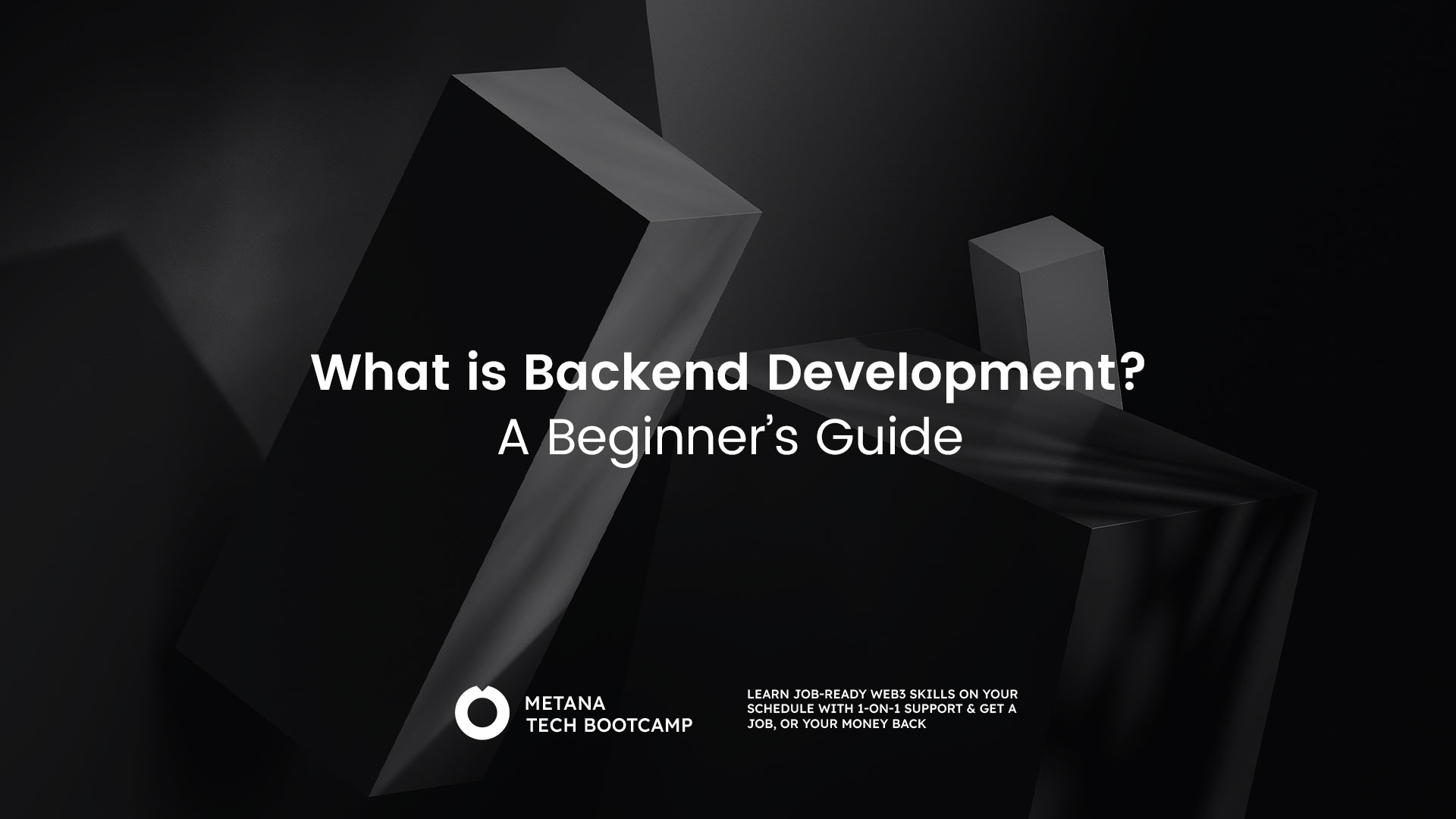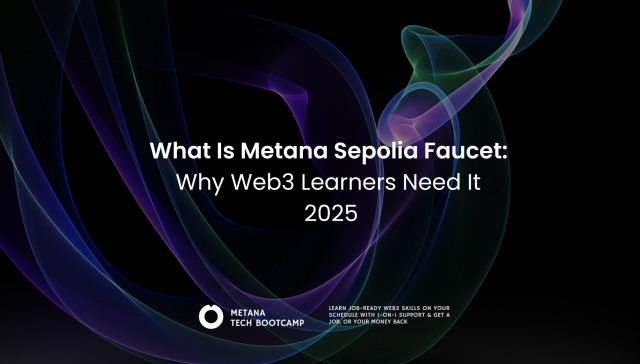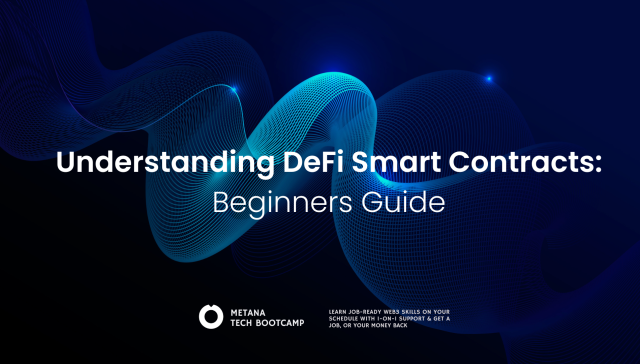When we visit a website or use a mobile app, the smooth experience we enjoy—the rapid loading of pages, the instant retrieval of our data, and the seamless interactions—is powered by a complex orchestration of technologies and processes. This magic happens in the background, on the “backend” of these platforms. But what is backend development exactly?, and why is it so crucial for web and app development?
Why is backend development so important? Consider this:
- It’s the brain of the operation: Without a strong backend, a website would be just a pretty picture with no functionality. Users wouldn’t be able to log in, submit forms, or even see dynamic content.
- It safeguards your data: Backend developers implement security measures to protect sensitive information like passwords and financial details.
- It’s constantly evolving: New technologies and user needs demand innovative solutions, and backend developers are at the forefront of building the future of the web.
If you’re someone who enjoys problem-solving, loves challenges, and wants to play a key role in building the digital world, backend development could be the perfect career path for you. Stay tuned as we dive deeper and explore the exciting world behind the curtain.
What is Backend Development?
So, we’ve established that backend development is the mastermind behind the scenes. But what are the tools in this magical toolbox? Let’s break down the key building blocks in simple terms:
1. Programming Languages: Think of these as the languages the backend speaks to tell the computer what to do. Imagine you give instructions to your friend in another language – the message might get lost! Similarly, different languages serve different purposes:
- Python: Popular for its clarity and ease of learning, like speaking in simple sentences.
- Java: Robust and widely used, like a formal language for complex tasks.
- JavaScript: Versatile and essential for interacting with users, like having multiple tongues to explain things differently.
2. Servers: These are the powerful computers that store and run the website’s data and applications. Picture them as giant libraries holding all the information and tools needed for the website to function.
3. Databases: Imagine a massive filing cabinet neatly organizing all the website’s content – user accounts, product details, etc. That’s what databases do, but in a digital way!
4. APIs (Application Programming Interfaces): These act as messengers, carrying information between the user’s device and the backend. Think of them like waiters taking your order in a restaurant and delivering it to the kitchen (the backend) and back.
Putting it all together: When you visit a website, your browser (like a customer) sends a request through the API (the waiter). The server (the kitchen) receives the request, retrieves the information from the database (the filing cabinet), and processes it using the programming language (the chef’s instructions). Finally, the API (the waiter) delivers the finished response back to your browser (the customer).
What Backend Developers Do?
Now that we’ve peeked into the backend toolbox, let’s see what the builders actually do! Backend developers wear many hats, but here are some of their core responsibilities:
- Building and Maintaining: They’re the architects who construct the server-side applications that power websites and apps. Think of them as building the engine and keeping it running smoothly.
- Database Wranglers: They manage and organize the website’s data using databases. Imagine them as librarians meticulously sorting information for easy access and retrieval.
- API Architects: They create APIs, the messengers that ferry information between users and the backend. Think of them as building bridges that connect the visible and invisible parts of the website.
- Security Champions: They’re the guardians of the digital fortress, implementing security measures to protect user data and prevent cyberattacks.
- Performance Gurus: They optimize applications for speed and efficiency, ensuring users have a seamless and responsive experience. Imagine them fine-tuning the engine for optimal performance.
- Teamwork Makes the Dream Work: They collaborate with front-end developers, designers, and other specialists to ensure everything works together seamlessly. Think of them as part of an orchestra, each playing their instrument to create a harmonious web experience.
Specialization is Key: Just like doctors, backend developers can specialize in different areas:
- Web Development: Building the core functionality of websites and applications.
- Data Engineering: Designing and managing large-scale data systems.
- API Development: Creating and maintaining robust APIs for data exchange.
- DevOps: Bridging the gap between development and operations for smooth deployment and maintenance.

What are the Benefits of Backend Development?
Jumping into backend development opens up a cool and rewarding job full of fun chances:
- Lots of Jobs: Backend developers are super popular! Lots of companies want smart people to help them. You might get to work on awesome things like a new app or a website that everyone loves!
- Fun Challenges: If you like figuring things out and being creative, backend development is like a big playground. It’s all about making complicated stuff work better and keeping everything safe online. It’s as exciting as solving a big puzzle!
- Helping Millions: The stuff you do as a backend developer helps tons of people every day. Whether it’s keeping their money safe or letting them watch their favorite shows, your work makes a big difference. Think how cool it would be to know you helped make something everyone uses!
- Work from Anywhere: Say goodbye to sitting in an office all day! With backend development, you can work from your home, a coffee shop, or even a beach if you want. Imagine being able to travel and work at the same time!
This is why backend development is such an awesome job path—it’s full of opportunities to do great things and have a lot of fun along the way.
Real-World Examples:
- Sarah, a backend developer at a startup, helped create a revolutionary language learning app used by millions worldwide, empowering them to connect and learn.
- David, a remote backend developer, built a secure financial trading platform from his home office in a mountain town, enjoying flexibility and contributing to a thriving FinTech company.
- Maria, a passionate backend developer, joined a team developing a healthcare app that helps doctors diagnose and treat patients efficiently, making a direct impact on people’s well-being.
These are just a few examples of the fulfilling possibilities that await in the world of backend development. So, if you’re looking for a career that offers intellectual stimulation, impactful work, and flexibility, dive into the exciting world of the backend – the invisible engine that powers the digital world!
Let’s Get Started with Backend Development
Excited to start building the invisible magic of the web? Here’s your launchpad!
Learning Resources:
- Online Courses and Tutorials:
- Free options: Coursera, edX, Khan Academy, FreeCodeCamp
- Paid options: Metana, Udacity, Udemy, Pluralsight
- Books:
- “Automate the Boring Stuff with Python” by Al Sweigart
- “Head First Programming” by David Griffiths and Dawn Griffiths
- “Eloquent JavaScript” by Marijn Haverbeke
- Interactive Platforms:
- Codecademy, Codewars, HackerRank
Languages to Conquer:
- Start with: Python (versatile, beginner-friendly) or JavaScript (widely used, web development focus)
- Explore later: Java (robust, enterprise applications), C# (.NET development)
Open-Source Projects:
- Join existing projects: GitHub Explore (filter by beginner-friendly)
- Start your own: Contribute to existing codebases or build small projects.
Communities and Forums:
- Stack Overflow: Ask questions and learn from experienced developers.
- Reddit communities: r/learnprogramming, r/webdev, r/python
- Local meetups and online groups: Connect with other learners and professionals.
Remember:
- Experiment and explore: Don’t be afraid to try different things and find what interests you most.
- Start small and build gradually: Don’t try to tackle everything at once. Begin with basic concepts and gradually progress to more complex projects.
- Practice consistently: The more you code, the better you’ll become.
- Seek help when needed: Don’t hesitate to ask questions in forums or communities.
- Enjoy the journey! Learning backend development can be challenging, but also incredibly rewarding. Embrace the process and have fun along the way!
Bonus Tip: Consider participating in hackathons or coding challenges. These events provide a great way to learn new skills, collaborate with others, and build your portfolio.
The Future of Backend Development
The internet is always changing, and backend development with it. New tools and tricks are always popping up, making it an exciting adventure. Imagine working on projects that millions of people use every day, from anywhere in the world!
Starting your journey into backend development means you’ll always have something new to learn and explore. Who knows? Maybe you’ll create something that changes the world!
And remember, the most important thing is to have fun and enjoy the magic of making things work on the internet.

FAQs
What is backend development?
- Backend development refers to server-side development focused on databases, scripting, and website architecture, ensuring that the web application runs smoothly.
Why is backend development important?
- It’s crucial for data storage, processing user requests, and serving the correct content to the frontend, ensuring a seamless user experience.
What languages are used in backend development?
- Common languages include PHP, Python, Ruby, Java, and .NET for creating dynamic web content and handling database operations.
How do backend developers work with frontend developers?
- Backend developers provide the data and functionality needed by frontend developers to create the user interface and user experience.
What are some common tools and technologies used in backend development?
- Databases (MySQL, MongoDB), server technologies (Apache, Nginx), and backend frameworks (Django, Ruby on Rails, Express.js) are essential.
How does backend development differ from frontend development?
- Backend development focuses on server, database, and application logic, while frontend development focuses on user interface and experience.
What skills are essential for a backend developer?
- Proficiency in backend programming languages, understanding of databases, knowledge of server management, and familiarity with APIs and web services.
Can backend development be self-taught?
- Yes, with numerous online resources, tutorials, and communities available, one can self-learn backend development.
What trends are shaping the future of backend development?
- Microservices architecture, containerization (Docker, Kubernetes), and serverless computing are key trends influencing backend development.





